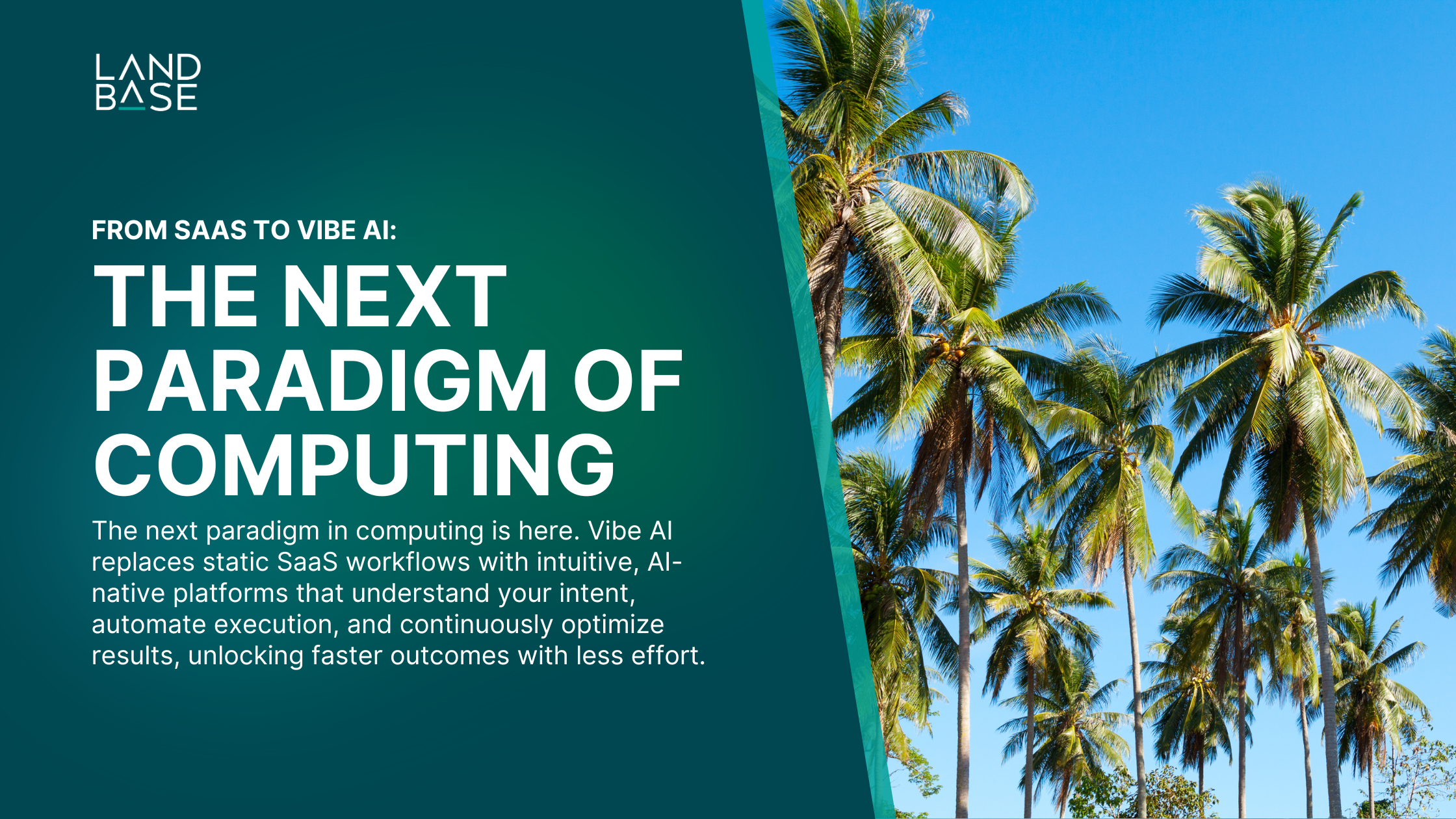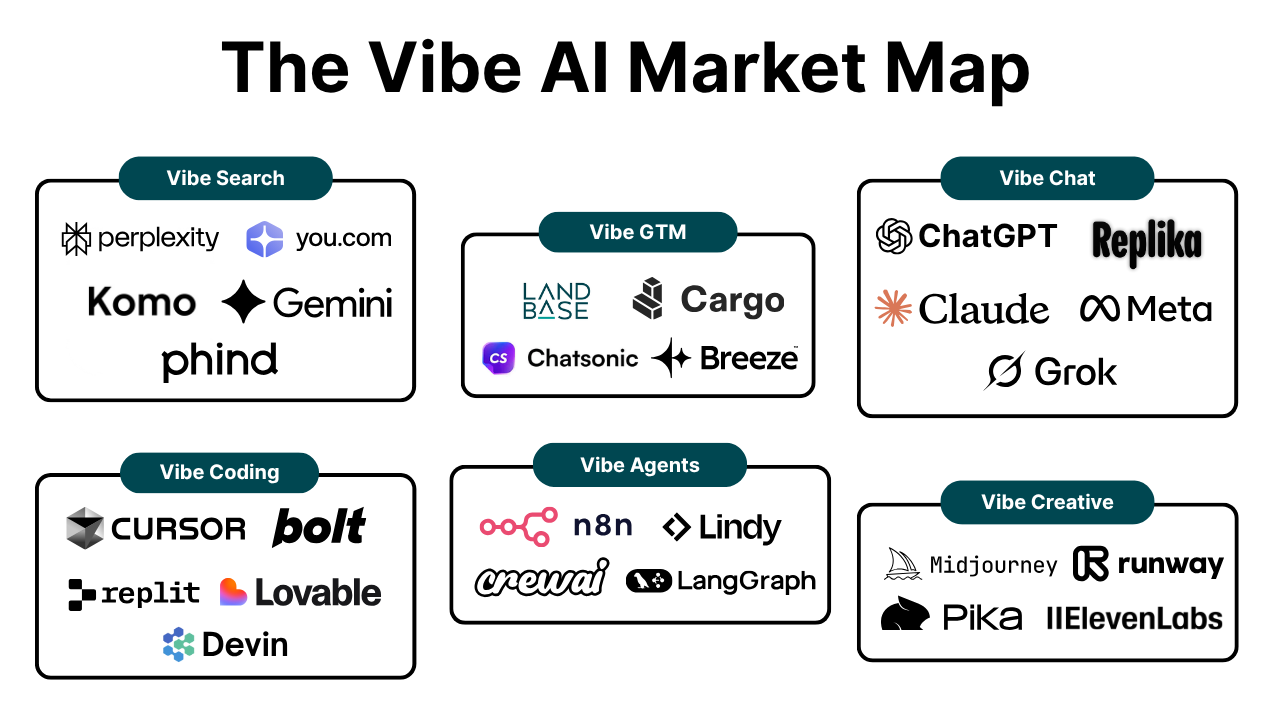
Daniel Saks
Chief Executive Officer

In the early 2000s, SaaS revolutionized how we consume software – no more CDs or on-prem installs, just a browser and a subscription. Yet even as SaaS put software in the cloud, the way we interact with software remained largely the same: we clicked through menus, filled out forms, and manually drove the process. Today, we stand at the cusp of a new paradigm shift. I call it Vibe AI – an age of intuitive, AI-native, autonomous software platforms that feel less like tools we wrestle with and more like collaborators that understand our intent. It’s a shift from telling software how to do something (via buttons and workflows) to simply telling it what outcome you want in natural language – and letting the AI handle the rest. As Microsoft’s Satya Nadella recently suggested, the very notion of traditional business applications may “collapse” in the era of intelligent agents(1). In other words, the static, menu-driven SaaS apps of yesterday are giving way to dynamic AI-driven agents that execute tasks autonomously. This isn’t an incremental improvement; it’s a fundamental rethinking of what software can be – an “AI-first” computing paradigm focused on outcomes, not procedures.

Vibe AI is my term for software experiences that are so intuitive and context-aware, it’s like the platform catches your “vibe” – your desired result – and makes it happen. Instead of navigating complex interfaces, you interact with the system in human terms. You describe what you need, and the AI figures out how to deliver it. Think of it as moving from driving the car yourself to riding in a self-driving car: you tell it where to go, and it navigates. In practice, a Vibe AI platform is AI-native (built from the ground up with intelligent automation at the core) and often agentic – meaning the AI can take autonomous actions, not just spit out recommendations. One writer described it well: integrating agentic AI into software is “not just an incremental upgrade but a paradigm shift, transforming software into autonomous agents capable of perceiving, planning, deciding, and acting independently to achieve complex goals”(2).
Crucially, Vibe AI is outcome-first. The user focuses on what they want, and the AI handles how to get there. We’re trading in rigid user interfaces for natural conversations. We’re swapping manuals and training guides for AI that just gets it. The vision is that “your software should work for you – not the other way around”(3). I’ve long believed technology should simplify our lives, not complicate them. Vibe AI is about finally fulfilling that promise by hiding the complexity behind an intelligent, human-centric interface.
To appreciate the leap from SaaS to Vibe AI, consider how we normally use software today versus an AI-driven approach:
Real-world examples of Vibe AI are already emerging. For instance, Midjourney has attracted over 16 million users as of late 2023(5) by enabling anyone to create stunning custom images just by typing a description. You don’t navigate a complex graphic design suite – you describe the image in natural language and the AI generates it. The result: high-quality artwork with no manual Photoshop work or design training required(6). Another example is Perplexity AI’s new browser, which features an AI assistant named Comet. Early users report that browsing with Comet “makes the traditional browsing experience feel archaic,” because the AI can not only fetch information but also take actions in context(2). Imagine reading a long article and simply asking the built-in AI, “Summarize this for me” – and it does so instantly. Or telling it, “Find upcoming events on my calendar,” and it goes off and returns with answers, even setting reminders if you ask(2). In Comet, natural language becomes the primary interface for the web, to the point that one analyst called it “the early infrastructure of an AI-mediated web where natural language is the primary interface for digital commerce.”(4)
What unites these examples is the intuitive, conversational interaction. No lengthy menus or rule configurations – you just express what you need. The AI handles the rest, whether that’s crafting a visual, answering a complex query, or executing multi-step workflows. We’re moving from clicks to conversations, from GUIs to “GAIs” (Generative/Agentic AI interfaces). It feels like having a smart colleague or assistant inside the software that you can brief on a task, rather than having to micromanage the software itself.
For B2B tech leaders, startup founders, and SMB owners, Vibe AI isn’t just a flashy new toy – it addresses real pain points and unlocks tangible benefits:
In short, Vibe AI promises a world where adopting new software doesn’t slow you down with training overhead, where small teams punch above their weight with AI as a force multiplier, and where productivity and performance can soar without a commensurate rise in payroll or complexity.
To make this discussion concrete, let’s look at an example from my world: Landbase. (Full disclosure: I’m the CEO and co-founder of Landbase.) We built Landbase precisely to embody this new paradigm for go-to-market teams. It’s an AI-native platform – we call it an “Agentic AI-GTM” platform – that autonomously handles sales and marketing campaigns. Our goal was to create the kind of “easy button” for growth that I wished existed when I saw so many SMBs struggle to launch campaigns due to limited time or expertise.
At the heart of Landbase is a proprietary AI model named GTM-1 Omni, which we trained on over 175 million contacts, 22 million businesses, and 40 million+ past marketing campaigns(3). In plain terms, GTM-1 Omni has ingested a massive trove of B2B sales and marketing knowledge – it has a sense of what works and what doesn’t across industries. This isn’t a general AI; it’s a domain-specific AI for go-to-market. Landbase uses this intelligence to power a host of specialized AI agents (an AI Strategist, AI Copywriter, AI Sales Rep, etc.) working together. When you log in to Landbase, you don’t see a daunting CRM or a stack of tools. You see something we call VibeGTM – a simple interface where you can describe your target audience and campaign goal in natural terms, and the AI will plan, generate, and execute the campaign for you(3). You can review or tweak the AI’s suggestions if you want, but you don’t have to manually grind through each step. “Launch B2B prospecting campaigns in minutes, not months” is the mantra we use, and we mean it. In early trials, users were able to go from idea to live multichannel campaign in under 20 minutes – a process that traditionally could take weeks coordinating between sales, marketing, and ops teams(3).
Landbase’s VibeGTM is a great example of Vibe AI in action. It replaces fragmented, manual sales processes with intelligent, autonomous orchestration(3). The AI agents handle everything from building targeted lead lists, writing personalized outreach emails and LinkedIn messages, to sending those messages and managing follow-ups across channels. The human user simply sets the direction (“I want to target these personas with this offer”) and the platform does the heavy lifting. The result for our users has been transformative: they’re seeing campaign conversion lifts of 4–7x and executing go-to-market programs at around 20% of the cost compared to doing it the old way (hiring staff or outsourcing to an agency)(3). One customer, a regional telecom provider, joked that it felt like they suddenly had a “24/7 AI sales team” working alongside their human team – prospecting and generating leads even while the humans sleep. That’s the power of an AI system-of-action that never takes a break.
Most importantly, adopting this Vibe AI approach has human benefits. By letting the AI take over the grunt work of GTM, our clients reclaim precious time to focus on strategy, creativity, and client relationships. Our philosophy is “Reclaim Your Day” – your software should free you up to do what only humans can do (build trust, think big, nurture relationships)(3). I deeply believe that AI should make us more human, not less. When machines handle the mundane tasks, people can devote energy to the meaningful parts of work. We’ve designed Landbase around that ethos, and it resonates: instead of sales teams feeling threatened by AI “replacing” them, they feel empowered by an AI that acts like an expert assistant. As I often reassure our users, “We’re creating technology that enhances the human element rather than replacing it.”(3)
For those curious to experience this new paradigm firsthand, Landbase offers a free version of our platform. We wanted anyone to be able to try an agentic AI GTM tool with zero friction – you can sign up, input a few details about your business, and within minutes see AI-generated campaign plans tailored for you. I invite you to take it for a spin and witness how intuitive it feels to work with an AI “go-to-market co-pilot.” The future of software is here – and it’s surprisingly easy to get started.
The shift from SaaS to Vibe AI represents nothing less than a new chapter in computing. We’re moving into an era where software works for us, not the other way around. This paradigm is intuitive (just tell it what you want), intelligent (it figures out the how), and iterative (it keeps getting better on its own). For businesses, it means technology that actually delivers outcomes – more leads, faster workflows, happier customers – without the usual burdens of complexity and cost. For people, it means a chance to focus on what really matters, as the busywork gets handled by tireless digital helpers.
We saw cloud and SaaS unlock incredible productivity by making software accessible. Now AI is set to unlock the next level of productivity by making software autonomous and truly user-centric. It’s an exciting time to be a part of this movement. My advice to executives and founders is: lean in. Explore these AI-native platforms, encourage your teams to experiment with natural language interfaces, and imagine what your organization could achieve if your software took care of the “how” so you can focus on the “why” and “what next.” Whether you’re a scrappy startup or an established enterprise, Vibe AI can be the great equalizer – enabling you to achieve more with less and to innovate faster than ever.
The SaaS wave taught us that technology delivered as a service can scale to millions. The Vibe AI wave will teach us that technology with a soul – technology that understands, acts, and learns – can empower millions. I, for one, am optimistic and energized. The next paradigm of computing is here, and it speaks our language. It’s time to embrace the new vibe.
Tool and strategies modern teams need to help their companies grow.